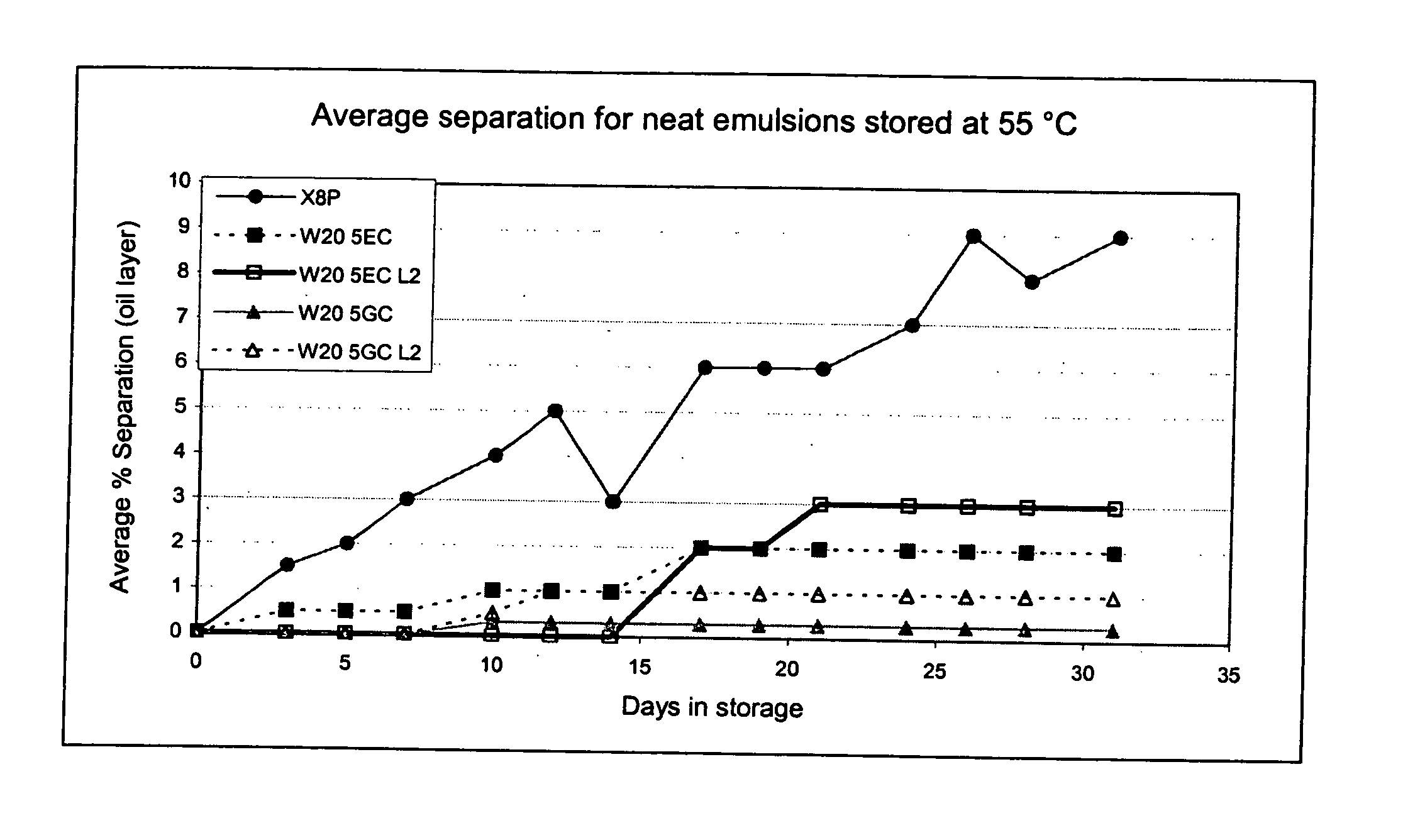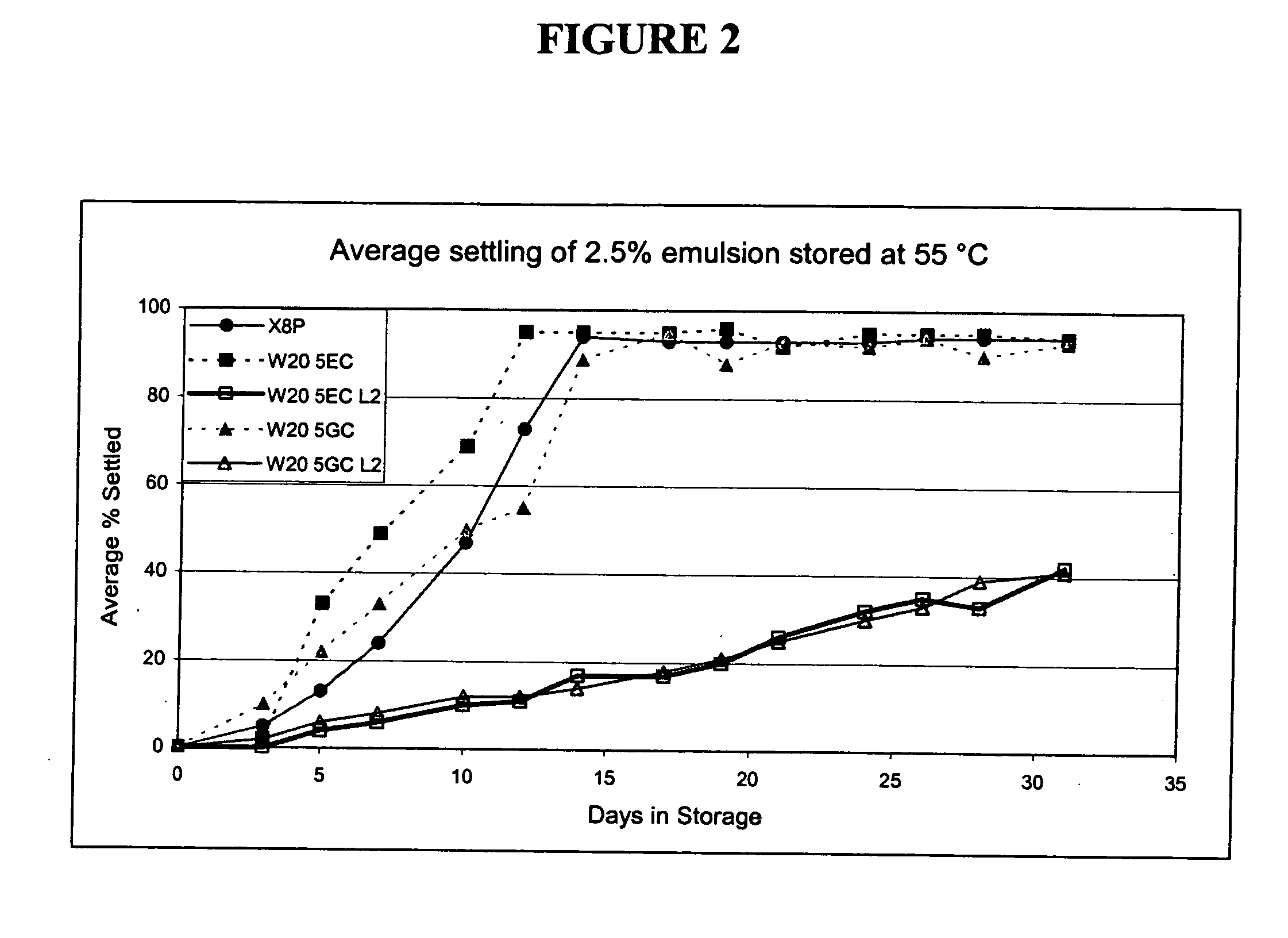Nanoemulsion compositions having anti-inflammatory activity
a technology of nebulizer and composition, which is applied in the direction of antibacterial agents, drug compositions, antiparasitic agents, etc., can solve the problems of fatal infections, antibiotics are not effective in eliminating or inactivating bacterial spores and viruses, and people infected with antibiotic resistant strains face serious and potentially life-threatening consequences, so as to minimize microbial resistance and toxicity
- Summary
- Abstract
- Description
- Claims
- Application Information
AI Technical Summary
Benefits of technology
Problems solved by technology
Method used
Image
Examples
example 1
Comparison of Standard Emulsions and Small Particle Size Nanoemulsions
[0086] The nanoemulsions are described by the components of the nanoemulsion according to Table 1. Unless otherwise noted, the oil is soybean oil. In the formulations, the detergent is listed first, followed by the volume percentage of the detergent (e.g., W205 refers to 5 vol % of Tween 20). In the formulations, the designation L2 refers to a small particle size nanoemulsion produced by a microfluidizer, while the absence of the L2 designation refers to a standard nanoemulsion (i.e., average particle sizes of 250 nm to about 1 micrometer). The designation L3 refers to nanoemulsions produced using an Avesting high pressure homogenizer.
TABLE 1ComponentSymbolTween 20W20EthanolECetylpyridinium chlorideCEDTAEDTriton X-100XTributyl phosphatePGlycerolGBenzalkonium chlorideBA
[0087] A first nanoemulsion is produced from a mixture containing 548 milliliters of water, 2.24 grams of EDTA, 25 grams of cetylpyridiunium chlo...
example 2
Method of Making a Small Particle Size Nanoemulsion
[0090] A standard nanoemulsion (i.e., particles sizes of 250 nm to 5 micrometers) is formed as follows. A mixture of 22 vol % distilled water, 1 wt / vol % cetylpyridinium chloride, 5 vol % Tween 20, 64 vol % soybean oil, and 8 vol % ethanol based on the total volume of the mixture is formed. The nanoemulsion is formed by mixing for 5 minutes at 10,000±500 revolutions per minute with a Silverson L4RT mixer with a standard mixing assembly and a fine emulsion screen. The standard nanoemulsion is denoted as W205EC.
[0091] A small particle size nanoemulsion is formed by passing the W205EC nanoemulsion 4 times through a Microfluidics M-110EH microfluidizer processor using an H210Z (200 μm) chamber downstream of an H230Z (400 μm) chamber. The small particle size nanoemulsion is denoted as W205EC L2.
[0092] After formation, the W205EC and W205EC L2 emulsions are diluted with water for further testing. Particle sizes are determined by Partic...
example 3
Effect of Microfluidizer Chamber Size on the Size of Small Particle Size Nanoemulsion Particles
[0094] A W205G BA2 nanoemulsion is passed through different combinations of microfluidizer chambers as shown in Table 4. The W205G BA2 L2 small particle size nanoemulsion is made with 1 pass with a Silverson L4RT mixer and 4 passes through a microfluidizer. Combinations of chamber having 75, 200, 400 micrometer microchannels are used to determine the relationship between the size of the microchannels and the size of the particles produced.
TABLE 4First chamber,Second chamber,SampleμmμmParticle size, nm175100174210075165375200185420075180575400211640075199
[0095] As shown in Table 4, the chamber size utilized in the microfluidizer, when varied between 75 and 400 μm, does not significantly affect the particle size of the emulsions. In all cases, the particle size is less than or equal to about 250 nm.
PUM
 Login to View More
Login to View More Abstract
Description
Claims
Application Information
 Login to View More
Login to View More - R&D
- Intellectual Property
- Life Sciences
- Materials
- Tech Scout
- Unparalleled Data Quality
- Higher Quality Content
- 60% Fewer Hallucinations
Browse by: Latest US Patents, China's latest patents, Technical Efficacy Thesaurus, Application Domain, Technology Topic, Popular Technical Reports.
© 2025 PatSnap. All rights reserved.Legal|Privacy policy|Modern Slavery Act Transparency Statement|Sitemap|About US| Contact US: help@patsnap.com



